AD9361 RF Agile Transceiver: 70 MHz to 6.0 GHz RF Chip, AD9361 CSPBGA and Datasheet
TxRx Only 70MHz~6GHz SPI 175mA~445mA - Receiving 240mA~820mA - Transmitting 144-LFBGA, CSPBGA









TxRx Only 70MHz~6GHz SPI 175mA~445mA - Receiving 240mA~820mA - Transmitting 144-LFBGA, CSPBGA
The AD9361 is a high-performance, highly integrated radio frequency (RF) Agile Transceiver™ designed for use in 3G and 4G base station applications. This article is going to explain details about the AD9361 rf transceiver.

AD9361 RF Agile Transceiver
What is AD9361?
The AD9361 is a high-performance, high-integration radio frequency (RF) Agile Transceiver for 3G and 4G base station applications. It is suited for a wide range of transceiver applications because of its programmability and wideband capability. The device combines an RF front end with a flexible mixed-signal baseband section and built-in frequency synthesizers, making design-in easier by offering a customizable digital interface to a CPU.
The AD9361 operates in the 70MHz to 6.0GHz range, covering most licensed and unlicensed bands. Channel bandwidths from less than 200 kHz to 56MHz are supported. The AD9361 is packaged in a 10mm × 10mm, 144-ball chip-scale package ball grid array (CSP_BGA).
AD9361 Functional Block Diagram

AD9361 Functional Block Diagram
AD9361 CAD Model
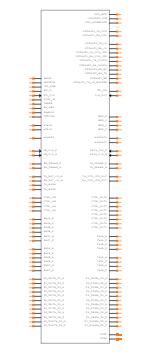
AD9361 Symbol
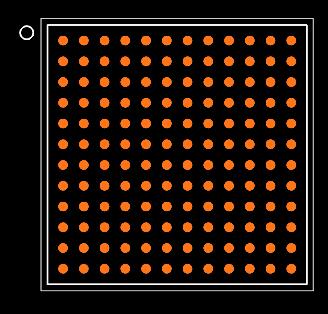
AD9361 Footprint
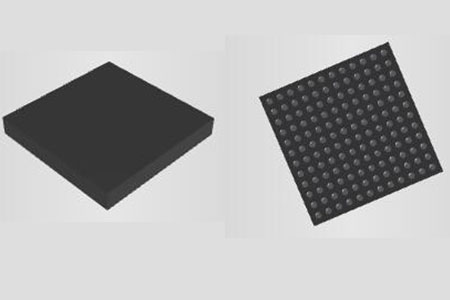
AD9361 3D Model
Specifications
- TypeParameter
- Lifecycle Status
Lifecycle Status refers to the current stage of an electronic component in its product life cycle, indicating whether it is active, obsolete, or transitioning between these states. An active status means the component is in production and available for purchase. An obsolete status indicates that the component is no longer being manufactured or supported, and manufacturers typically provide a limited time frame for support. Understanding the lifecycle status is crucial for design engineers to ensure continuity and reliability in their projects.
PRODUCTION (Last Updated: 2 weeks ago) - Factory Lead Time8 Weeks
- Contact Plating
Contact plating (finish) provides corrosion protection for base metals and optimizes the mechanical and electrical properties of the contact interfaces.
Copper, Silver, Tin - Mount
In electronic components, the term "Mount" typically refers to the method or process of physically attaching or fixing a component onto a circuit board or other electronic device. This can involve soldering, adhesive bonding, or other techniques to secure the component in place. The mounting process is crucial for ensuring proper electrical connections and mechanical stability within the electronic system. Different components may have specific mounting requirements based on their size, shape, and function, and manufacturers provide guidelines for proper mounting procedures to ensure optimal performance and reliability of the electronic device.
Surface Mount - Mounting Type
The "Mounting Type" in electronic components refers to the method used to attach or connect a component to a circuit board or other substrate, such as through-hole, surface-mount, or panel mount.
Surface Mount - Package / Case
refers to the protective housing that encases an electronic component, providing mechanical support, electrical connections, and thermal management.
144-LFBGA, CSPBGA - Number of Pins144
- Operating Temperature
The operating temperature is the range of ambient temperature within which a power supply, or any other electrical equipment, operate in. This ranges from a minimum operating temperature, to a peak or maximum operating temperature, outside which, the power supply may fail.
-40°C~85°C - Packaging
Semiconductor package is a carrier / shell used to contain and cover one or more semiconductor components or integrated circuits. The material of the shell can be metal, plastic, glass or ceramic.
Tray - JESD-609 Code
The "JESD-609 Code" in electronic components refers to a standardized marking code that indicates the lead-free solder composition and finish of electronic components for compliance with environmental regulations.
e1 - Pbfree Code
The "Pbfree Code" parameter in electronic components refers to the code or marking used to indicate that the component is lead-free. Lead (Pb) is a toxic substance that has been widely used in electronic components for many years, but due to environmental concerns, there has been a shift towards lead-free alternatives. The Pbfree Code helps manufacturers and users easily identify components that do not contain lead, ensuring compliance with regulations and promoting environmentally friendly practices. It is important to pay attention to the Pbfree Code when selecting electronic components to ensure they meet the necessary requirements for lead-free applications.
no - Part Status
Parts can have many statuses as they progress through the configuration, analysis, review, and approval stages.
Active - Moisture Sensitivity Level (MSL)
Moisture Sensitivity Level (MSL) is a standardized rating that indicates the susceptibility of electronic components, particularly semiconductors, to moisture-induced damage during storage and the soldering process, defining the allowable exposure time to ambient conditions before they require special handling or baking to prevent failures
3 (168 Hours) - Number of Terminations144
- ECCN Code
An ECCN (Export Control Classification Number) is an alphanumeric code used by the U.S. Bureau of Industry and Security to identify and categorize electronic components and other dual-use items that may require an export license based on their technical characteristics and potential for military use.
5A991.B - TypeTxRx Only
- Terminal Finish
Terminal Finish refers to the surface treatment applied to the terminals or leads of electronic components to enhance their performance and longevity. It can improve solderability, corrosion resistance, and overall reliability of the connection in electronic assemblies. Common finishes include nickel, gold, and tin, each possessing distinct properties suitable for various applications. The choice of terminal finish can significantly impact the durability and effectiveness of electronic devices.
Tin/Silver/Copper (Sn96.5Ag3.0Cu0.5) - Terminal Position
In electronic components, the term "Terminal Position" refers to the physical location of the connection points on the component where external electrical connections can be made. These connection points, known as terminals, are typically used to attach wires, leads, or other components to the main body of the electronic component. The terminal position is important for ensuring proper connectivity and functionality of the component within a circuit. It is often specified in technical datasheets or component specifications to help designers and engineers understand how to properly integrate the component into their circuit designs.
BOTTOM - Terminal Form
Occurring at or forming the end of a series, succession, or the like; closing; concluding.
BALL - Peak Reflow Temperature (Cel)
Peak Reflow Temperature (Cel) is a parameter that specifies the maximum temperature at which an electronic component can be exposed during the reflow soldering process. Reflow soldering is a common method used to attach electronic components to a circuit board. The Peak Reflow Temperature is crucial because it ensures that the component is not damaged or degraded during the soldering process. Exceeding the specified Peak Reflow Temperature can lead to issues such as component failure, reduced performance, or even permanent damage to the component. It is important for manufacturers and assemblers to adhere to the recommended Peak Reflow Temperature to ensure the reliability and functionality of the electronic components.
260 - Number of Functions1
- Supply Voltage
Supply voltage refers to the electrical potential difference provided to an electronic component or circuit. It is crucial for the proper operation of devices, as it powers their functions and determines performance characteristics. The supply voltage must be within specified limits to ensure reliability and prevent damage to components. Different electronic devices have specific supply voltage requirements, which can vary widely depending on their design and intended application.
1.3V - Terminal Pitch
The center distance from one pole to the next.
0.8mm - Depth
In electronic components, "Depth" typically refers to the measurement of the distance from the front to the back of the component. It is an important parameter to consider when designing or selecting components for a project, as it determines how much space the component will occupy within a circuit or device. The depth of a component can impact the overall size and layout of the circuit board or enclosure in which it will be installed. It is usually specified in millimeters or inches and is crucial for ensuring proper fit and functionality within the intended application.
10mm - Frequency
In electronic components, the parameter "Frequency" refers to the rate at which a signal oscillates or cycles within a given period of time. It is typically measured in Hertz (Hz) and represents how many times a signal completes a full cycle in one second. Frequency is a crucial aspect in electronic components as it determines the behavior and performance of various devices such as oscillators, filters, and communication systems. Understanding the frequency characteristics of components is essential for designing and analyzing electronic circuits to ensure proper functionality and compatibility with other components in a system.
70MHz~6GHz - Time@Peak Reflow Temperature-Max (s)
Time@Peak Reflow Temperature-Max (s) refers to the maximum duration that an electronic component can be exposed to the peak reflow temperature during the soldering process, which is crucial for ensuring reliable solder joint formation without damaging the component.
NOT SPECIFIED - Base Part Number
The "Base Part Number" (BPN) in electronic components serves a similar purpose to the "Base Product Number." It refers to the primary identifier for a component that captures the essential characteristics shared by a group of similar components. The BPN provides a fundamental way to reference a family or series of components without specifying all the variations and specific details.
AD9361 - Pin Count
a count of all of the component leads (or pins)
144 - Operating Supply Voltage
The voltage level by which an electrical system is designated and to which certain operating characteristics of the system are related.
1.3V - Protocol
In electronic components, the parameter "Protocol" refers to a set of rules and standards that govern the communication between devices. It defines the format, timing, sequencing, and error checking methods for data exchange between different components or systems. Protocols ensure that devices can understand and interpret data correctly, enabling them to communicate effectively with each other. Common examples of protocols in electronics include USB, Ethernet, SPI, I2C, and Bluetooth, each with its own specifications for data transmission. Understanding and adhering to protocols is essential for ensuring compatibility and reliable communication between electronic devices.
LTE - Power - Output
Power Output in electronic components refers to the amount of electrical power that a device can deliver to a load. It is typically measured in watts and indicates the effectiveness of the component in converting electrical energy into usable work or signal. Power Output can vary based on the component's design, operating conditions, and intended application, making it a critical factor in the performance of amplifiers, power supplies, and other electronic devices. Understanding the Power Output helps in selecting appropriate components for specific applications to ensure efficiency and reliability.
8dBm - RF Family/Standard
The parameter "RF Family/Standard" in electronic components refers to the specific radio frequency (RF) technology or standard that the component complies with or is designed for. RF technology encompasses a wide range of frequencies used for wireless communication, such as Wi-Fi, Bluetooth, cellular networks, and more. Different RF standards dictate the frequency bands, modulation techniques, data rates, and other specifications for communication systems. Understanding the RF family/standard of a component is crucial for ensuring compatibility and optimal performance in RF applications.
Cellular - Serial Interfaces
A serial interface is a communication interface between two digital systems that transmits data as a series of voltage pulses down a wire. Essentially, the serial interface encodes the bits of a binary number by their "temporal" location on a wire rather than their "spatial" location within a set of wires.
SPI - Current - Receiving
Current - Receiving refers to the amount of electrical current that an electronic component or device is capable of accepting from a power source or another component in a circuit. It indicates the maximum current that can be safely received without causing damage or malfunction. This parameter is crucial for ensuring compatibility and reliability in electronic designs, as exceeding the rated receiving current can lead to overheating or failure of the component.
175mA~445mA - Current - Transmitting
Current - Transmitting is a parameter used to describe the maximum amount of electrical current that an electronic component can handle while in the transmitting mode. This parameter is crucial for components such as transistors, diodes, and integrated circuits that are involved in transmitting signals or power within a circuit. Exceeding the specified current transmitting rating can lead to overheating, component failure, or even damage to the entire circuit. Designers and engineers must carefully consider this parameter when selecting components to ensure the reliability and performance of the electronic system.
240mA~820mA - Number of Receivers2
- Noise Figure
Noise figure (NF) and noise factor (F) are measures of degradation of the signal-to-noise ratio (SNR), caused by components in a signal chain.
2.5 dB - Height1mm
- Length10mm
- Width10mm
- REACH SVHC
The parameter "REACH SVHC" in electronic components refers to the compliance with the Registration, Evaluation, Authorization, and Restriction of Chemicals (REACH) regulation regarding Substances of Very High Concern (SVHC). SVHCs are substances that may have serious effects on human health or the environment, and their use is regulated under REACH to ensure their safe handling and minimize their impact.Manufacturers of electronic components need to declare if their products contain any SVHCs above a certain threshold concentration and provide information on the safe use of these substances. This information allows customers to make informed decisions about the potential risks associated with using the components and take appropriate measures to mitigate any hazards.Ensuring compliance with REACH SVHC requirements is essential for electronics manufacturers to meet regulatory standards, protect human health and the environment, and maintain transparency in their supply chain. It also demonstrates a commitment to sustainability and responsible manufacturing practices in the electronics industry.
No SVHC - RoHS Status
RoHS means “Restriction of Certain Hazardous Substances” in the “Hazardous Substances Directive” in electrical and electronic equipment.
ROHS3 Compliant - Lead Free
Lead Free is a term used to describe electronic components that do not contain lead as part of their composition. Lead is a toxic material that can have harmful effects on human health and the environment, so the electronics industry has been moving towards lead-free components to reduce these risks. Lead-free components are typically made using alternative materials such as silver, copper, and tin. Manufacturers must comply with regulations such as the Restriction of Hazardous Substances (RoHS) directive to ensure that their products are lead-free and environmentally friendly.
Contains Lead
AD9361 Features
RF 2 × 2 transceiver with integrated 12-bit DACs and ADCs
70MHz to 6.0GHz Band
Supports TDD and FDD operation
<200 kHz to 56MHz Tunable channel BW
6 Differential or 12 single-ended inputs dual receivers
Superior receiver sensitivity with a noise figure <2.5dB
Real-time monitor and control signals for manual gain control
Independent automatic gain control
AD9361 Application
Point to point communication systems
Femtocell/picocell/microcell base stations
General-purpose radio systems
AD9361_TX Analog Devices Transmitter
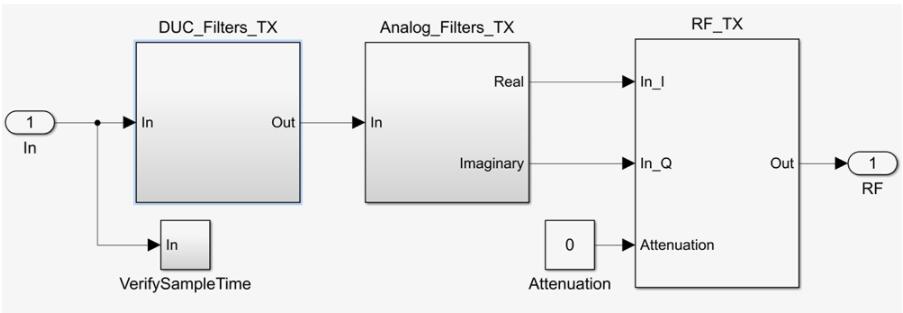
AD9361_TX Analog Devices Transmitter
There are three steps to the transmitter model:
Filters for digital up-conversion (DUC Filters TX)
(Analog Filters TX) Analog filters
(RF TX) RF front end
The transmitter model can be used to imitate the following behaviors:
Attenuation that can be adjusted
Noise in the phase of the oscillator
Noise floor based on carrier
Attenuation and carrier-dependent nonlinearities such as output-referred third-order intercept are examples of attenuation and carrier-dependent nonlinearities (OIP3)
Gain imbalance due to attenuation
Carrier leak in a local oscillator (LO) that is attenuation dependent
AD9361_RX Analog Devices Receiver
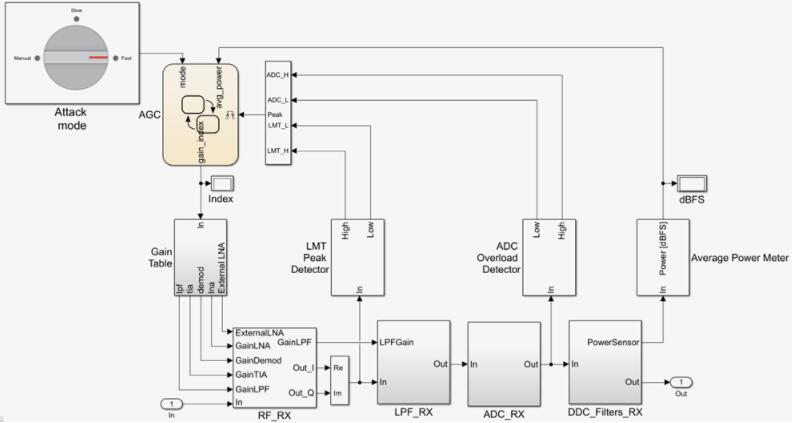
AD9361_RX Analog Devices Receiver
There are three steps to the transmitter model:
Filters for digital up-conversion (DUC Filters TX)
(Analog Filters TX) Analog filters
(RF TX) RF front end
The transmitter model can be used to imitate the following behaviors:
Attenuation that can be adjusted
Noise in the phase of the oscillator
Noise floor based on carrier
Attenuation and carrier-dependent nonlinearities such as output-referred third-order intercept are examples of attenuation and carrier-dependent nonlinearities (OIP3)
Gain imbalance due to attenuation
Carrier leak in a local oscillator (LO) that is attenuation dependent
AD9361 Dimensions

AD9361 Dimensions
AD9361 Manufacturer
Analog Devices (NASDAQ: ADI) is a world leader in the design, manufacture, and marketing of a broad portfolio of high-performance analog, mixed-signal, and digital signal processing (DSP) integrated circuits (ICs) used in virtually all types of electronic equipment. Since our inception in 1965, we have focused on solving the engineering challenges associated with signal processing in electronic equipment. Used by over 100,000 customers worldwide, our signal processing products play a fundamental role in converting, conditioning, and processing real-world phenomena such as temperature, pressure, sound, light, speed, and motion into electrical signals to be used in a wide array of electronic devices.
Trend Analysis
Datasheet PDF
- Datasheets :
- ConflictMineralStatement :
What is the use of AD9361?
The AD9361 RF Agile Transceiver was designed for programmable radio applications that operate over a wide range of modulation schemes and network specifications that require best-in-class performance, high integration, wideband operation, and flexibility.
What is agile transceiver?
The device combines an RF front-end with a flexible mixed-signal baseband section and integrated frequency synthesizers, simplifying design-in by providing a configurable digital interface to a processor.
How does AD9361 work?
The device combines an RF front end with a flexible mixed-signal baseband section and integrated frequency synthesizers, simplifying design-in by providing a configurable digital interface to a processor or FPGA. The AD9361 chip operates in the 70 MHz to 6 GHz range, covering most licensed and unlicensed bands.
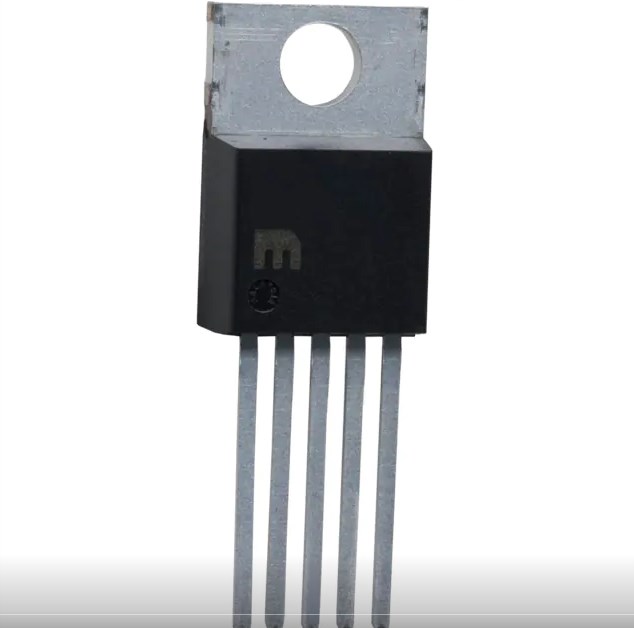 LM2576 Voltage Regulator: Features, Speicifications and Applications
LM2576 Voltage Regulator: Features, Speicifications and Applications19 May 2021838
 A Comprehensive Guide to LTC7813EUH#TRPBF DC DC Switching Controller
A Comprehensive Guide to LTC7813EUH#TRPBF DC DC Switching Controller06 March 2024108
 How to program STM32F030F4P6TR microcontroller: A complete tutorial
How to program STM32F030F4P6TR microcontroller: A complete tutorial24 July 2025402
 STM32F429IIT6 STMicroelectronics: Specification, Datasheet, Manufacturer And Features
STM32F429IIT6 STMicroelectronics: Specification, Datasheet, Manufacturer And Features11 April 2022771
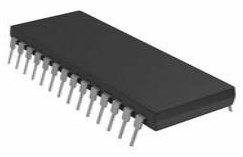 AS6C62256 CMOS SRAM: Features, Pinout and Datasheet
AS6C62256 CMOS SRAM: Features, Pinout and Datasheet24 February 20223670
![LRS-350-24 AC DC Converters Output 24V 14.6A[Video]: Datasheet, Wiring Diagram, and Features](https://res.utmel.com/Images/Article/ceb816d2-89eb-4eaa-a176-8b309e61b0b9.png) LRS-350-24 AC DC Converters Output 24V 14.6A[Video]: Datasheet, Wiring Diagram, and Features
LRS-350-24 AC DC Converters Output 24V 14.6A[Video]: Datasheet, Wiring Diagram, and Features31 March 20226704
 TPS51200DRCR Regulator: Features, Applications and Datasheet
TPS51200DRCR Regulator: Features, Applications and Datasheet28 October 2023998
![LM4871 Amplifier: Circuit, Pinout, and Datasheet [Video&FAQ]](https://res.utmel.com/Images/Article/380db621-bac0-4f72-a442-d988f9f9505f.png) LM4871 Amplifier: Circuit, Pinout, and Datasheet [Video&FAQ]
LM4871 Amplifier: Circuit, Pinout, and Datasheet [Video&FAQ]19 October 20219409
 How much do you know about HDMI Cable?
How much do you know about HDMI Cable?28 October 20213181
 What is PLL(Phase Locked Loop)?
What is PLL(Phase Locked Loop)?29 November 20215525
 Tunnel Diode: Definition, Features and Tunneling Process
Tunnel Diode: Definition, Features and Tunneling Process25 August 20209465
 What are Avalanche Diodes?
What are Avalanche Diodes?02 April 202011978
 What is an Accelerometer Sensor?
What is an Accelerometer Sensor?20 April 202111652
 Understanding the Low Noise Amplifier (LNA)
Understanding the Low Noise Amplifier (LNA)20 March 202514614
 What is a USB Data Cable?
What is a USB Data Cable?27 August 202112557
 What is a Variable Resistor?
What is a Variable Resistor?26 April 202524016
Analog Devices Inc.
In Stock
United States
China
Canada
Japan
Russia
Germany
United Kingdom
Singapore
Italy
Hong Kong(China)
Taiwan(China)
France
Korea
Mexico
Netherlands
Malaysia
Austria
Spain
Switzerland
Poland
Thailand
Vietnam
India
United Arab Emirates
Afghanistan
Åland Islands
Albania
Algeria
American Samoa
Andorra
Angola
Anguilla
Antigua & Barbuda
Argentina
Armenia
Aruba
Australia
Azerbaijan
Bahamas
Bahrain
Bangladesh
Barbados
Belarus
Belgium
Belize
Benin
Bermuda
Bhutan
Bolivia
Bonaire, Sint Eustatius and Saba
Bosnia & Herzegovina
Botswana
Brazil
British Indian Ocean Territory
British Virgin Islands
Brunei
Bulgaria
Burkina Faso
Burundi
Cabo Verde
Cambodia
Cameroon
Cayman Islands
Central African Republic
Chad
Chile
Christmas Island
Cocos (Keeling) Islands
Colombia
Comoros
Congo
Congo (DRC)
Cook Islands
Costa Rica
Côte d’Ivoire
Croatia
Cuba
Curaçao
Cyprus
Czechia
Denmark
Djibouti
Dominica
Dominican Republic
Ecuador
Egypt
El Salvador
Equatorial Guinea
Eritrea
Estonia
Eswatini
Ethiopia
Falkland Islands
Faroe Islands
Fiji
Finland
French Guiana
French Polynesia
Gabon
Gambia
Georgia
Ghana
Gibraltar
Greece
Greenland
Grenada
Guadeloupe
Guam
Guatemala
Guernsey
Guinea
Guinea-Bissau
Guyana
Haiti
Honduras
Hungary
Iceland
Indonesia
Iran
Iraq
Ireland
Isle of Man
Israel
Jamaica
Jersey
Jordan
Kazakhstan
Kenya
Kiribati
Kosovo
Kuwait
Kyrgyzstan
Laos
Latvia
Lebanon
Lesotho
Liberia
Libya
Liechtenstein
Lithuania
Luxembourg
Macao(China)
Madagascar
Malawi
Maldives
Mali
Malta
Marshall Islands
Martinique
Mauritania
Mauritius
Mayotte
Micronesia
Moldova
Monaco
Mongolia
Montenegro
Montserrat
Morocco
Mozambique
Myanmar
Namibia
Nauru
Nepal
New Caledonia
New Zealand
Nicaragua
Niger
Nigeria
Niue
Norfolk Island
North Korea
North Macedonia
Northern Mariana Islands
Norway
Oman
Pakistan
Palau
Palestinian Authority
Panama
Papua New Guinea
Paraguay
Peru
Philippines
Pitcairn Islands
Portugal
Puerto Rico
Qatar
Réunion
Romania
Rwanda
Samoa
San Marino
São Tomé & Príncipe
Saudi Arabia
Senegal
Serbia
Seychelles
Sierra Leone
Sint Maarten
Slovakia
Slovenia
Solomon Islands
Somalia
South Africa
South Sudan
Sri Lanka
St Helena, Ascension, Tristan da Cunha
St. Barthélemy
St. Kitts & Nevis
St. Lucia
St. Martin
St. Pierre & Miquelon
St. Vincent & Grenadines
Sudan
Suriname
Svalbard & Jan Mayen
Sweden
Syria
Tajikistan
Tanzania
Timor-Leste
Togo
Tokelau
Tonga
Trinidad & Tobago
Tunisia
Turkey
Turkmenistan
Turks & Caicos Islands
Tuvalu
U.S. Outlying Islands
U.S. Virgin Islands
Uganda
Ukraine
Uruguay
Uzbekistan
Vanuatu
Vatican City
Venezuela
Wallis & Futuna
Yemen
Zambia
Zimbabwe







